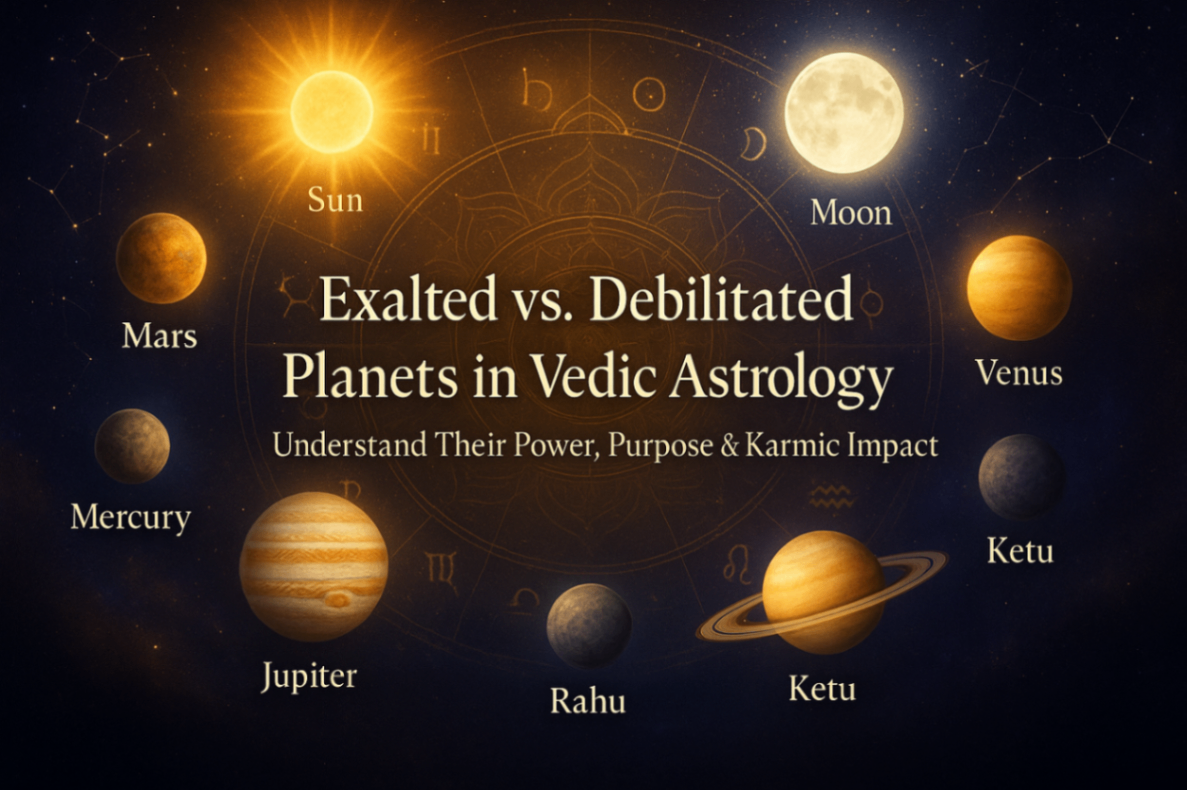Vedic knowledge teaches us that our surroundings influence every aspect of life. When it comes to creating a balanced and nurturing home, a well-designed House Map can be a powerful tool. This map is not about external appearances alone. It is about arranging various elements so that beneficial energies flow smoothly through every room.
Understanding the Role of Vedic Astrology
Vedic astrology suggests that celestial bodies guide the energy within and around us. Our homes also mirror these cosmic principles. The placement of rooms, colors, and objects can either boost or disrupt harmony. A properly planned House Map aligns the energies of each section of the home with universal vibrations. This alignment creates a balanced environment that supports mental peace, good health, and overall prosperity.
Essence of Vastu Shastra
Vastu Shastra is an ancient discipline that focuses on the energy flow within a structure. It shares close ties with Vedic astrology. Both systems recognize the five primary elements: Earth, Water, Fire, Air, and Space. Each element governs specific directions and has a unique impact on our lives. Whether you want to build a new residence or make positive changes in your existing one, you should consider how Vastu principles integrate with your House Map.

When you align your home with elemental and directional guidelines, you create favorable conditions for growth and contentment. This approach goes beyond interior decoration. It involves addressing possible energy imbalances, especially in zones such as the kitchen, bedroom, and puja room.
Directions and the Five Elements
Vedic thought suggests that each direction corresponds to an element. The northeast relates to Water, while the southeast relates to Fire. Northwest is associated with Air, and southwest corresponds to Earth. The center and open spaces generally connect with Space. A balanced House Map takes into account these elements. Each area in your home should harmonize with the energy of its related direction.

For example, a kitchen in the southeast fosters the Fire element. It encourages a lively environment beneficial for cooking. A bedroom in the southwest provides stability, grounding the household in restful energy. These placements uphold an equilibrium. They also lessen the likelihood of disruptions and negative outcomes.
Placing Rooms According to Vastu
Placing core rooms in the proper location often feels challenging. We cannot always shift kitchens or bedrooms easily. Yet we can adopt minor changes. By balancing colors, materials, and decorative items, we bring our spaces closer to an ideal Vastu arrangement.
Kitchen in the southeast. Master bedroom in the southwest. Study room in the northeast. Living area in the north or east. These guidelines ensure each living space aligns with its most supportive energy. They also help neutralize obstacles. A thoughtful House Map paves the way for daily routines to flow more effortlessly.
Colors and Vedic Energies
Colors are not just for decoration. They also affect how we feel and act. Vedic teachings link specific hues to the five elements. Reds and oranges complement the Fire element. Blues relate to Water. Earthy browns and muted yellows strengthen the Earth element. Light pastel shades resonate with Air. White and gray connect to Space. When selecting paint or décor, keep these relationships in mind. Even if you cannot rearrange entire rooms, these color shifts may help restore balance. They can soothe restless energies or invigorate areas that feel stagnant.
Importance of Sacred Spaces
A puja room or sacred corner is crucial in a Vedic home. This is where you set intentions and connect to a higher power. With regard to where to keep god maps in house vastu, placing such sacred imagery in the northeast can invite auspicious energies. If the northeast is unavailable, try to find a quiet corner with good sunlight. Dedicate it to spiritual activities. If you wonder where to keepgod maps in house vastu, ensure you place them at a spot that feels calm and reverent. Do not clutter this area with items unrelated to prayer or meditation. By respecting the purity of this zone, you enhance its spiritual power.

Mapping the Home for Different Directions
Every home faces a specific direction. Vastu emphasizes that each orientation has distinct benefits. A vastu map for east facing house often highlights abundant morning light, promoting clarity and growth. A south facing house vastu map might focus on grounding energies that ensure stability. Although orientation cannot always be changed, you can still arrange interiors in harmony with your home’s facing direction.
When planning a house map according to vastu, be mindful of key placements. Do not crowd critical areas such as the entrance or the center of the house. Keep them open and free of heavy objects. To grasp the basics of how to make vastu map for a house, start by sketching a simple outline with each direction marked. Then identify the ideal location for rooms based on elemental energies.
Creating a Flow of Positive Energy
A balanced House Map should allow energy to circulate without interruption. Congested or dim corners encourage stagnation. Try to keep corridors and doorways open. Ensure that main doors do not creak or stick. These small actions keep the positive flow intact. If your layout seems rigid and unchangeable, you can rely on colors, mirrors, or plants to redirect the energy. These subtle fixes can offset small flaws in your initial design.
Tailoring a House Map to Specific Needs
Vedic guidance is not a one-size-fits-all approach. Each family’s needs and challenges differ. Health concerns, career goals, and relationship dynamics vary from one household to another. Examine these priorities while developing your vastu map for house. If you require more tranquility, focus on placing bedroom and meditation spaces in calm zones. If you seek professional advancement, emphasize the northern areas. The best House Map is one that meets your personal aspirations while still honoring Vedic principles.
How to make diagram of vastu map for a house
Start with a basic square or rectangular outline. Label each direction: North, South, East, West, Northeast, Southeast, Northwest, Southwest. Decide where the entrance should be. Mark the rooms based on your preference and Vastu guidelines. Use distinct shapes or colors to represent living room, kitchen, bedroom, and puja space. This diagram lets you visualize how your home’s blueprint interacts with each direction.
If your design cannot follow ideal placements, try smaller adjustments. Let’s say the kitchen is in the northeast. This is a Water-dominant zone, so the Fire element of cooking may clash with Water energy. You can lessen the effect by using soft colors or placing a small partition. Subtle interventions keep energies from clashing.
Addressing Common Challenges
Many homes have structural constraints or existing placements that do not seem optimal from a Vastu perspective. You can address these challenges through symbolic or functional remedies:
Use suitable colors for walls, furniture, or curtains to offset mismatched element placements.
Place items such as mirrors or crystals strategically to correct directional imbalances.
Introduce plants in corners that feel dull or inactive to breathe fresh energy into the space.
Maintain cleanliness and avoid clutter, especially in key areas such as the entrance or the northeast corner.
These small, mindful changes create an environment that supports happiness and tranquility.
Vastu shastra house map and Remedies for Specific Directions
If the entrance falls in the southeast or southwest, people often worry about financial or health hurdles. Consider adding protective symbols or painting the door in harmonizing colors. If the house extends in an odd shape on one side, place balancing elements there. For instance, if you have an extension toward the south, strengthen your north or east side to counteract any negative impact. Another scenario is having a bedroom in the northwest, which can sometimes feel restless. Add calming tones in that room to anchor the Air element.
Remedies do not have to be dramatic. They just need to address imbalances. If you notice repeated patterns of conflict, look at the Fire element in your home. The southeast might be poorly managed or cluttered. To fix it, keep that area bright, introduce lively colors, and remove any items that block free movement. Even a small lamp or a pinch of sunlight can enliven that space.
South facing house vastu map Tips
When you have a south-facing home, people often worry about stability. This orientation can be beneficial if balanced properly. Keep the main entrance well-lit and consider placing a small garden or potted plants near the southwest. This fortifies Earth energy, making your home more grounded. You can also position heavier furniture in the southwest. By doing so, you encourage steadiness in family relationships and finances.
Integrating Vedic Astrology with Vastu
Vedic astrology focuses on planetary influences, while Vastu focuses on spatial alignment. Merging these two systems can create a truly auspicious home. For instance, if an astrologer notes that a specific planet influences your career, ensure the related direction is well-managed. If you are under a planetary period that demands calm and spiritual practice, maintain an uncluttered meditation zone or puja corner. Balancing these cosmic and earthly factors helps you optimize life events that unfold under planetary transits.
Proper Placement of Sacred Images
Some people keep large pictures or statues of deities. If you wonder about where to keep god maps in house vastu, place them in a serene, undisturbed zone. The northeast corner is usually the most favorable for spiritual pursuits, as it corresponds to Water energy. If the northeast is unavailable, look for a space in the east for your puja room or altar. This ensures daily rituals receive the gentle warmth of morning sunlight. If that also proves challenging, make sure your sacred images or statues face east or west. What matters most is the sacred ambiance of that corner.
Designing an East-Facing Vastu Map
An east facing house catches the early rays of the sun. This arrangement can bring growth and energy into your life. When creating a vastu map for east facing house, focus on keeping the front clear and welcoming. Reserve some open space in the east or north area. This helps the sun’s energy flow inside. Placing common areas like the living or dining room near the east invites natural light. It also fosters a bright, uplifting atmosphere.
If your bedroom or kitchen also ends up in the east, consider how each function resonates with the sun’s energy. The bedroom might require some shades or curtains if it gets too bright. Meanwhile, a kitchen in the east can feel vibrant and welcoming for early morning cooking.
Balancing Fire, Water, and Earth
In many homes, the biggest source of conflict lies between Fire and Water. The kitchen represents Fire. Bathrooms and storage for water containers represent Water. If they lie too close or in direct alignment, friction may arise. You can separate them with wooden partitions or use gentle earth-tone colors to buffer clashing energies.
Earth elements such as ceramics or clay-based décor can stabilize the home. You might place these items in the southwest or center. Air elements, represented by windows or breezy layouts, should remain free of heavy drapes or blockages. Keep them open for fresh air flow. Space is the intangible element that connects everything. You can maintain its purity by decluttering and allowing open zones where energy can move unhindered.
Shape Your Own Harmony
When planning a how to make vastu map for a house, you do not need to match every textbook rule. Vastu is flexible when approached thoughtfully. Begin with core principles: place rooms in suitable directions, balance the five elements, and maintain open flow. If structural changes are impossible, rely on color adjustments and symbolic cures. Ensure you understand your family’s needs, whether they center on good health, financial security, or positive relationships.
The path toward a harmonious home lies in continual improvement. Even after setting up a vastu map for house, keep noticing how each space feels. Are there corners that constantly gather dust? Is there a door that squeaks? These may be signs of subtle energy blockages. Tackle them through small yet effective steps. Over time, your home will mirror the supportive energies outlined in your House Map.
Conclusion
A carefully curated House Map inspired by Vedic astrology and Vastu can elevate the quality of your life. It blends the cosmic insight of astrology with the spatial wisdom of Vastu Shastra. If you plan each section of your home around the five elements and directions, you invite healing and abundance into daily living. This process does not end with construction or renovation. It continues as you observe and refine small details, ensuring harmony remains intact.
When you integrate the principles shared here, you create more than just a dwelling. You craft a serene sanctuary that reflects and nurtures the energies of everyone inside. Whether you are learning how to make diagram of vastu map for a house or exploring a vastu shastra house map, you will find that peace flourishes when every direction, color, and element sits in thoughtful alignment.
Embrace these Vedic ideals. Let each room resonate with its corresponding energy. By doing so, you will experience a living space that truly supports, protects, and inspires. Your House Map then becomes both a reflection of cosmic harmony and a blueprint for personal growth.





































